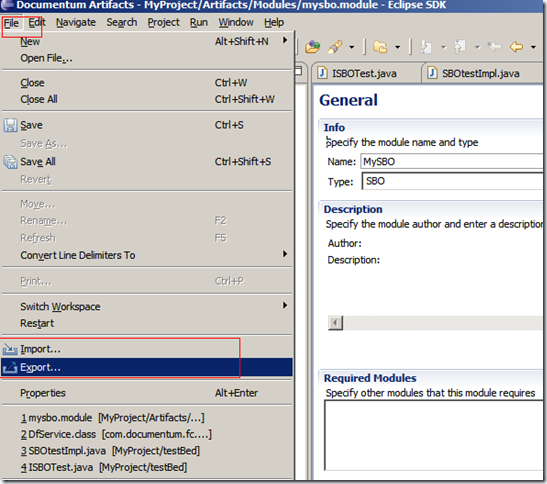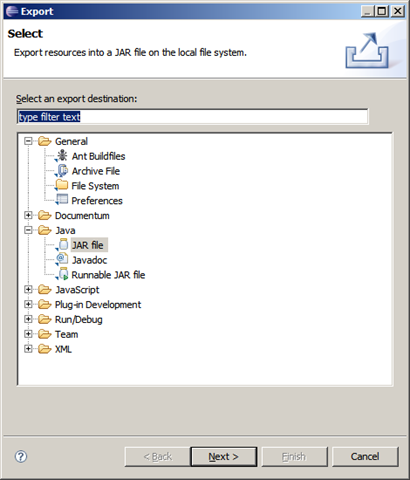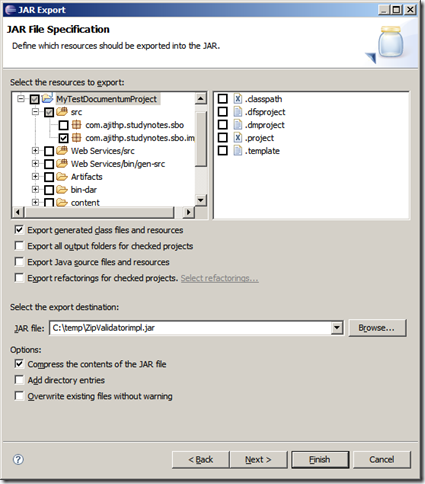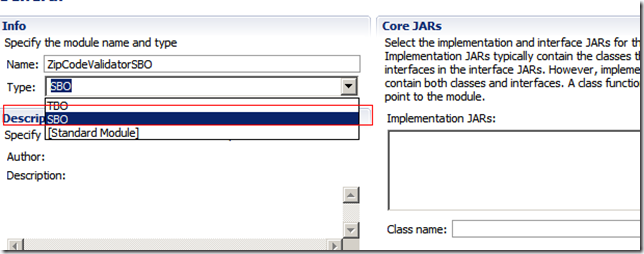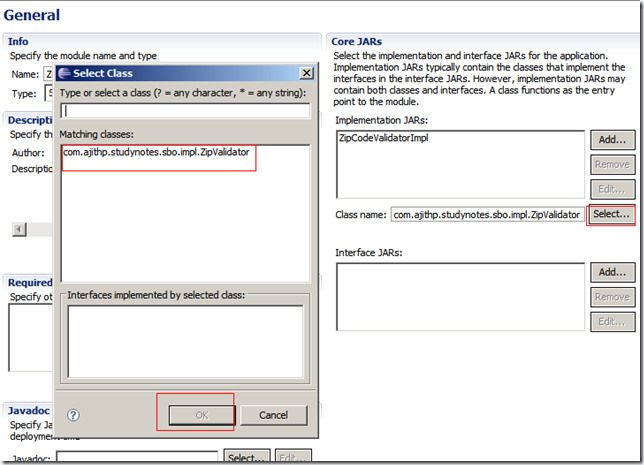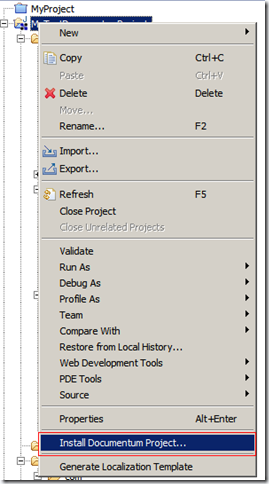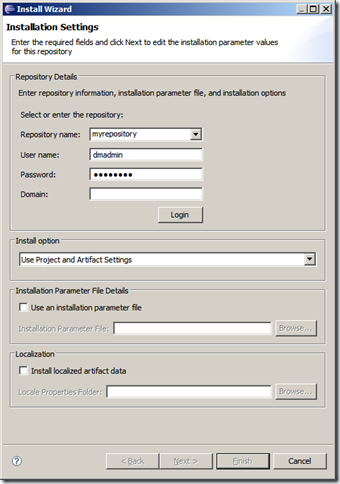Documentum Business Object Framework which was introduced from Documentum 5.3 plays a key role in most of the current Documentum implementations. Service-based Object is one of the basic members of Documentum BOF family. Let’s try to see what makes Service Based Objects very popular and how can you implement it.
What is an SBO
In simple terms, SBO in Documentum can be compared to session beans of the J2EE environment. SBO enable the developers to concentrate just on the business logic, and all the other aspects will be managed for you by the server. This reduces the application code significantly and reduces lots of complexities. The most significant advantage of a BOF that it’s deployed in a central repository. The repository maintains this module and DFC ensures that the latest version of the code is delivered to the client automatically.
Service-Based Objects are repository and object type in-depended that means the Same SBO can be used by multiple Documentum repositories and can It can retrieve and do operations on different object types. SBO’s can also access external resources, for example, a Mail server or an LDAP server. Before the introduction of Documentum Foundation Services, SBO’s were commonly used exposed to expose Documentum web services.
An SBO can call another SBO or by any Type based Objects. (Type Based Objects (TBO) are a different kind of Business Object types which I will explain in a separate study note)
A very simple to understand example for an SBO implementation would be a Zip code Validator. Multiple object types might have Zip code across multiple repositories. So if this functionality is exposed as an SBO, it can be used by the custom application irrespective of Object types and repositories. This Validator SBO can be used even by different TBO’s for validations.
Here are some bullet points about SBO’s for easy remembering
- SBO’s are part of Documentum Business Object framework
- SBO’s are not associated with any repositories
- SBO’s are not associated with any Documentum object types.
- SBO information is stored in repositories designated as Global Registry.
- SBO’s are stored in /System/Modules/SBO/<sbo_name> folder of repository. <sbo_name> is the name of SBO.
- Each folder in /System/Modules/SBO/ corresponds to an individual SBO
How to implement an SBO using Composer
The steps to create an SBO are these.
1) Create an interface that extends IDfService define your business method
2) Create the implementation class implement write your business logic, This class should extend DfService and implement the interface defined in Step 1
3) Create a jar file for the created Interface and another jar for the implementation class then create Jar Definitions
4) Create an SBO Module and Deploy your Documentum Archive using Documentum Composer (Application builder for older versions)
Let’s see these steps with an Example SBO Zip Code Setter, I am not covering the steps using application builder here. The screenshots and the notes will give you an insight into how to use Documentum Composer to implement a Service Based Object in Documentum version 6 or above.
Step 1: Create an interface and define your Business method
The first step is to create an interface which will define the business functionality. This interface should extend IDfService interface. The client application will use this interface to instantiate the SBO.
Click New –> Interface in Documentum Composer. Click on the Add button of Extended Interfaces and search for IDfService. Select IDfService and click OK
Now Add the Business method ValidateZipCode() to an interface. The code should look like the following.
package com.ajithp.studynotes.sbo; import com.documentum.fc.client.IDfService; import com.documentum.fc.client.IDfSysObject; import com.documentum.fc.common.DfException; public interface IZipValidatorSBO extends IDfService { public void validateZipCode (IDfSysObject obj, String zipCode, String repository)throws DfException; }
Step 2: Create the implementation class
All the Service Based Object implementation classes should extend from DfService class and implement the Interface created in the first step. DfService class is an abstract class There are few methods which were abstract in 5.3 and has provided with a default implementation in 6.0 and later
| Method Name | Returns | More information |
| getVendorString() | String | This method’s default implementation returns a empty String. Override to make changes to it. |
| getVersion() | String | This method returns a version which is not right, Override this method to return Major.minor version. |
| isCompatible() | boolean | The default implementation returns true if the version is an exact match |
Let’s see some other important methods of DfService Class before we move further.
| Method Name | Returns | More information |
| getName() | String | This returns the fully qualified logical name of the service interface |
| getSession() | IDfSession | This method returns IDfsession Object for the docbase name which is passed as argument to this method. You have to make sure that you call releaseSession() after you are done with the operation that involves session. |
| releaseSession() | Releases the handle to the session reference passed to this method. | |
| getSessionManager() | IDfSessionManager | Returns the session manager. |
Managing repository sessions in SBO As We saw the previous table its always good practice to release the repository session as soon as you are done with its use. So the ideal way to do this should be like this.
// Get the session IDfSession session = getSession(repoNam); try { // do the operation with session } catch (Exception e){ // Process the exception }finally { // release the session releaseSession(session) }
Transactions in SBO
Another important thing is to know is how to handle transactions in SBO. Note that only session manager transactions can be used in an SBO. The system will throw an Exception when a session based transaction used within an SBO.
beginTransaction() will start a new Transaction and use commitTransaction() to commit it or abortTransaction() to abort a transaction. Always ensure that you are not beginning a transaction where another transaction is active. You can use isTransactionActive() to find out whether a transaction is active or not.
Another important point is if your SBO doesn’t start a transaction don’t commit it or abort it in the SBO Code instead if you want to abort the transaction use setTransactionRollbackOnly() method.
Other important points
1) Since SBO’s are repository independent, do not hardcode the repository names in the methods. Either pass the repository name as a method parameter or have it as a variable in SBO and use a setter method to populate it after instantiating
2) Always try to make SBO’s stateless (Its a pain to manage state full SBO’s ).
3) Don’t reuse SBO, Always create a new instance before an operation.
Now let’s see how to code our ZipSetterSBO
Click on New –> Class, Click on the Browse button of Superclass and Search and Select DfService and in the Interfaces search for the Interface created in the previous step and Click OK. Also, select the option Inherited Abstract Methods in Which method stubs would you like to create.
I had overridden method getVersion() for the illustration purpose. See the code sample for the inline comments.
package com.ajithp.studynotes.sbo.impl; import com.ajithp.studynotes.sbo.IZipValidatorSBO; import com.documentum.fc.client.DfService; import com.documentum.fc.client.IDfSession; import com.documentum.fc.client.IDfSysObject; import com.documentum.fc.common.DfException; public class ZipValidator extends DfService implements IZipValidatorSBO { public static final String versionString = "1.0"; // overriding the default public String getVersion() { return versionString ; } public void validateZipCode (IDfSysObject obj, String zipCode, String repository) throws DfException { IDfSession session = getSession(repository); try { if (isValidUSZipcode(zipCode)){ obj.setString("zipcode",zipCode); obj.save(); } } catch (Exception e){ /* Assuming that transaction is handled outside the code and this says DFC to abort the transaction in case of any error */ getSessionManager().setTransactionRollbackOnly(); throw new DfException(); } finally { releaseSession(session); } } private boolean isValidUSZipcode(String zipCode){ // implement your logic to validate zipcode. // or even call a external webservice to do that // returning true for all zip codes return true; } }
Step 3: Generate Jar files and Create Jar Definitions
The next step in SBO creation is to create Jar files which will hold the interface and the implementation classes. These jar files are required to deploy your SBO.
Use Composers/Eclipse Create Jar option or command line jar command to create the jar file
Selecting the sbo package to create the interface jar
Selecting the com.ajithp.studynotes.sbo.impl for implementation.
Look at the Composers Export Jar screenshots for Interface and implementation (Refer Eclipse Documentation for more details). I think the figures posted above are self-explanatory.
The Command line to create a Jar file is jar cf <name_of_jar>, Please look at the Java Documentation for more details on switches and options of Jar command.
The creation of Jar Definitions is new step added in Composer.
1) In Composer change the perspective to Documentum Artifacts Click New –> Other –> Documentum Artifacts –> Jar Definition
2) Click Next and Enter the name of for the Jar Definition and click Finish
3) Select Type as Interface if the jar has only interface, Implementation if the jar has the only implementation of interface or Interface and Implementation if the single jar file has both interface and implementation. Click on the Browse button and browse to the jar created in the last step.
In Our case create two Jar Definitions The first one with type as Interface pointing to Jar Created for SBO and a second one with type Implementation pointing to the implementation jar
Name the Interface jar def as zipcodevalidator and the implementation jardef as zipcodevalidatorimpl
Step 4: Create a Module and Deploy the SBO
In Composer change the perspective to Documentum Artifacts then Click New –> Other –> Documentum Artifacts –> Module
Give a valid name and leave the default folder and Click Finish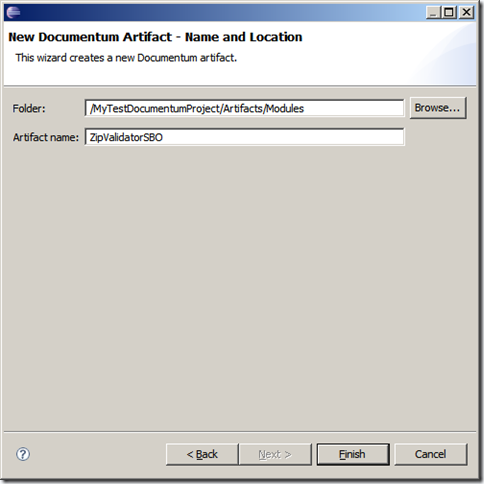
In the Module, edit window select SBO from the dropdown
Now Click on Add Section of Implementation Jars of Core Jars. A new pop up window will appear which will have a list of all the Jar definitions set to Type Implementation and Interface and Implementation. Select the one you wanted to use for ZipCodeValidatorSBO that is ZipCodeValidatorImpl.
Click on the Select Button near pointing to Class name and Select the implementation class. In this case ZipValidator
Now Click on Add Section of Interface Jars of Core Jars. A new pop up window will appear which will have a list of all the Jar definitions set to Type Interfaces and Interface and Implementation. Select the one you wanted to use for ZipCodeValidatorSBO that is ZipCodeValidator.
For more details of other options refer to Documentum Composer Manual. Save the Module.
Now right click on the project and install the Documentum project
Click on the Login button after logged in Click on Finish to start the installation.
Look at the Documentum composer documentation to know more about the Installation options.
How to use SBO from a Client Application
follow the below steps to instantiate an SBO from a client application.
1) Get the Local client
2) Create login info and populate the login credentials.
3) Create an IDfSessionManager object
4) Use the newService () from the Client Object to create an SBO instance
// create client IDfClient myClient = DfClient.getLocalClient(); // create login info IDfLoginInfo myLoginInfo = new DfLoginInfo(); myLoginInfo.setUser("user"); myLoginInfo.setPassword("pwd"); // create session manager IDfSessionManager mySessionManager = myClient.newSessionManager(); mySessionManager.setIdentity("repositoryName", myLoginInfo); // instantiate the SBO IZipValidatorSBO zipValidator = (IZipValidatorSBO) myClient.newService( IZipValidatorSBO.class.getName(), mySessionManager); // call the SBO service zipValidator.validateZipCode(obj, zipCode, "repositoryName");



